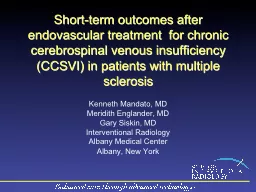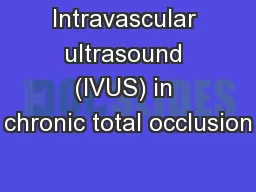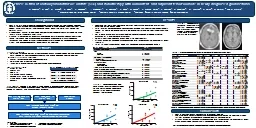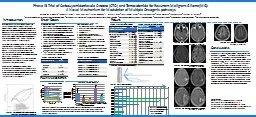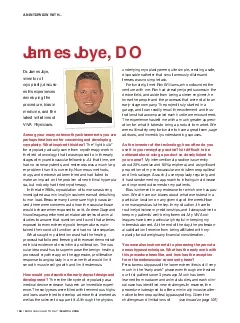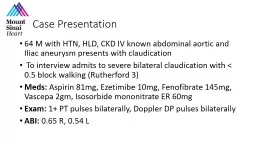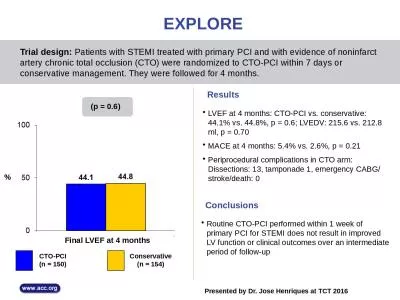PPT-Calcified Popliteal CTO ENDOVASCULAR LIVE CASE
Author : hadley | Published Date : 2022-06-15
July 21 2021 Clinical presentation 70 yo male sp proximal and mid left SFA intervention on 07072021 with subsequent improvement in left lower extremity symptoms
Presentation Embed Code
Download Presentation
Download Presentation The PPT/PDF document "Calcified Popliteal CTO ENDOVASCULAR LIV..." is the property of its rightful owner. Permission is granted to download and print the materials on this website for personal, non-commercial use only, and to display it on your personal computer provided you do not modify the materials and that you retain all copyright notices contained in the materials. By downloading content from our website, you accept the terms of this agreement.
Calcified Popliteal CTO ENDOVASCULAR LIVE CASE: Transcript
Download Rules Of Document
"Calcified Popliteal CTO ENDOVASCULAR LIVE CASE"The content belongs to its owner. You may download and print it for personal use, without modification, and keep all copyright notices. By downloading, you agree to these terms.
Related Documents


